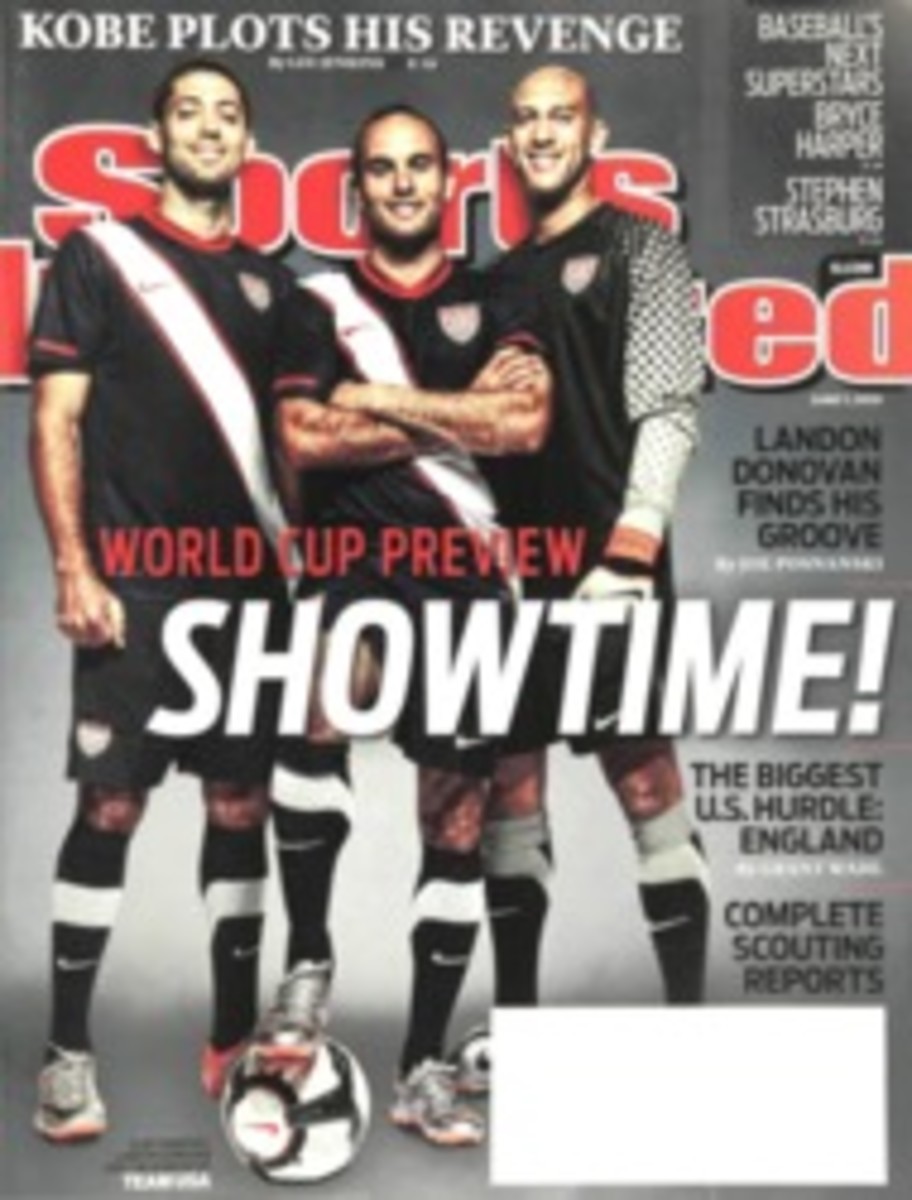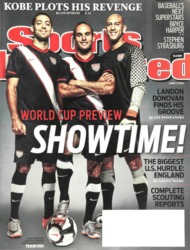
A Children's Crusade
One recent morning two patients of Dr. James R. Andrews sat side by side in a rehab center in Birmingham. Both were shirtless. Both had fresh surgical holes in their right shoulders. And both were attentive as physical therapists hovered, advising them on how to put on a T-shirt a day after an operation (injured arm first).
On the left was Angel Guzman, whom the Cubs pay $825,000 to blow his 95-mph fastball by National League hitters. Three years ago Andrews also did Guzman's Tommy John surgery. The patient on the right was Tommy Ventura. Tommy is 17 years old, a righthander who this week is finishing his junior year at Archbishop Spalding High in Severn, Md. Some 18 months ago Tommy was throwing a ball during a team workout when he felt an awful pain in his shoulder. "First I thought, This is an odd feeling," he says. "When it kept hurting, even when I was lobbing the ball, I knew something more serious was wrong." After diagnosing a torn rotator cuff and a frayed labrum, Andrews performed an operation on Tommy's shoulder.
"You try to tell your kids not to play year-round," says Jim Ventura, Tommy's father. "But the ones who don't, they're not on the elite teams. They don't have the college coaches looking at them."
Sports-medicine clinics are filling up with Tommy Venturas. Andrews estimates that 60% of the athletes he operates on these days are high school athletes or younger. Sixty percent. "I don't think epidemic is too strong a word," the surgeon says. "We're seeing kids hurt before they even have a chance to become athletes."
In April the surgeon and the American Orthopaedic Society for Sports Medicine, of which Andrews is president, launched a campaign to curb sports injuries in children. It's called STOP (Sports Trauma and Overuse Prevention). In addition to Andrews, STOP's spokespeople include Charles Barkley, Terry Bradshaw, Tom Brady, Bo Jackson, Howie Long, Jack Nicklaus, Shaquille O'Neal, Bart Starr, sports agent Tom Condon and Redskins chairman Dan Snyder. Most have been Andrews's patients. Many are friends from his decades-long career in which he arguably has been the nation's preeminent sports surgeon.
The warning that the 67-year-old Andrews shouts the loudest concerns overuse injuries. A generation ago such injuries were rare in youth sports. Now, stress fractures in cross-country runners, frayed ligaments in soccer players and strained shoulders in tennis players make up half of all injuries suffered by kids playing sports. The main culprit: sport specialization. "You just have this enormous pressure nowadays on kids to play that one sport year-round," Andrews says. In 1998 Andrews performed Tommy John surgery on five patients who were in high school or younger. In 2008 he did the operation on 28 kids who fell into that age bracket.
The American Sports Medicine Institute, the research wing of Andrews's surgical practice at St. Vincent's Hospital in Birmingham, has spent two decades and millions of dollars studying sports injuries in children and spinning out recommendations about how much is too much. One of those studies, written by Andrews and ASMI's director, Glenn Fleisig, posed the question: Are youth pitchers really at higher risk of injuring their arms if they throw year-round? No doubt about it. It found that youth players who pitched more than eight months a year were five times more likely to incur an injury that resulted in surgery.
Andrews has offered specific recommendations, all commonsensical but often ignored. "Encourage your child to be involved in more than one sport," he declares. "Cross-training helps develop their bodies. Don't allow your child to play in more than one league in the same sport in the same season. That's how they get burned out." In all sports, "parents should let children seek their own positions. Everybody can't be a pitcher." But for those who can be, Andrews says, "make sure your child learns only two pitches to begin with—a fastball and a changeup. There's no reason for a child to be throwing a curveball."
Recently, STOP launched a website (stopsportsinjuries.org) with safety tips about 12 sports, and the organization is formulating plans for public-service ads and possibly the launch of a National Youth Sports Injury Day. Three years ago, partly at the behest of Andrews—who is on the board of Little League Baseball—and Fleisig, Little League overhauled its pitching rules so that kids in its 7,000 leagues around the globe were limited to 85 throws per game. (Under old rules there was a maximum of six innings per week, but no limits on pitches.)
One beneficiary of those guidelines might have been Tommy Ventura, who won't pitch again until 2011 at the soonest. Tommy allows that it's frustrating not to be able to be on the field. But he's able to crack jokes about "the hard part" of his recovery: trying to sleep on a bandaged arm. The teenager doesn't blame the adults who've guided his baseball life. "It's not like they were trying to hurt me," he says. "It just happened. You roll with it, I guess."
Mark Hyman is the author of Until It Hurts: America's Obsession with Youth Sports and How It Harms Our Kids.
Now on SI.com
For a video of James Andrews on Little League arm injuries, go to SI.com/vault
"We're seeing kids HURT BEFORE THEY EVEN HAVE A CHANCE to become athletes," Andrews says.
ILLUSTRATION
ILLUSTRATION BY DARROW

